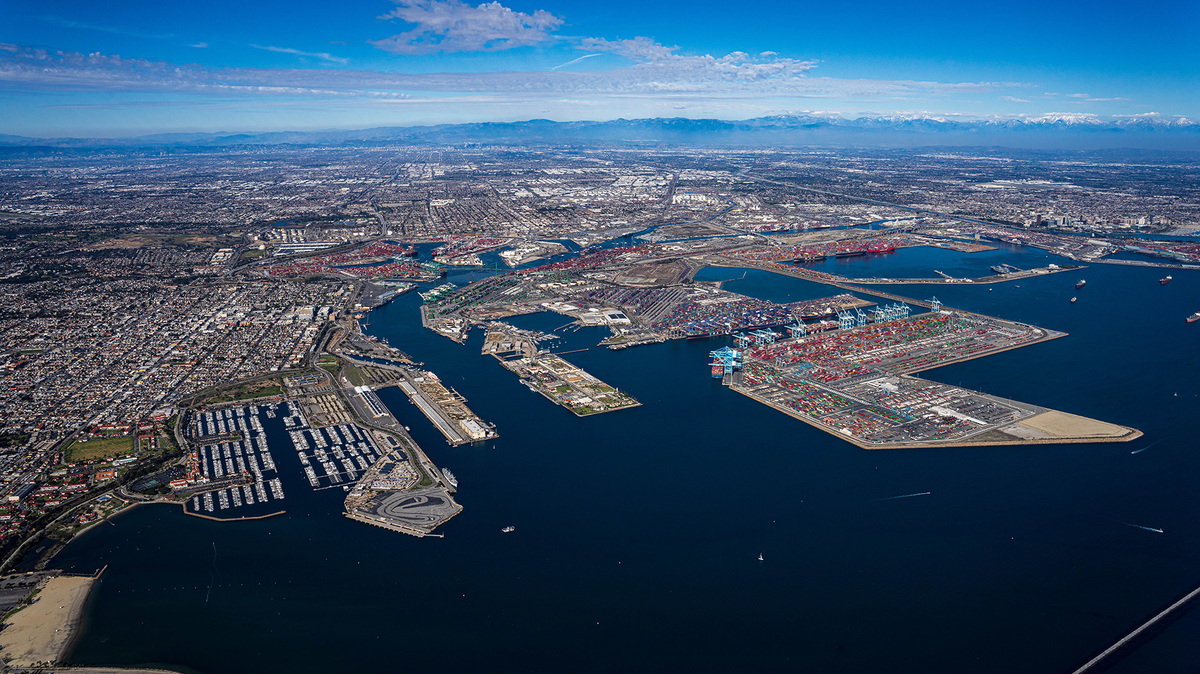Korea-US-Japan green shipping corridor could be a game changer
Establishing a green shipping corridor between these nations can drive the maritime sector closer to meeting global targets of limiting global warming to 1.5°C above pre-industrial levels.
 PHOTO: View of the entire Port of Los Angeles, US. Port of Los Angeles
PHOTO: View of the entire Port of Los Angeles, US. Port of Los Angeles
South Korea, Japan, and the US serve as major hubs for maritime transportation due to their significant shared shipping traffic volume, a report from environmental non-profit organisation Solutions for Our Climate (SFOC) stated. Establishing a green corridor between these nations is particularly crucial compared to others because of the high vessel traffic, the report highlights.
If the green corridor between Korea, the US and Japan is established, container ships running on green marine fuels on these routes will not only reduce local shipping emissions, but also serve as a global model for cutting greenhouse gas emissions in shipping routes and ports worldwide.
A green corridor linking South Korean ports like Busan, Incheon, and Gwangyang with Japanese ports in Tokyo and Yokohama, along with US ports in Los Angeles and Long Beach, has the potential to slash up to 41.3 million mt of carbon dioxide (tCO2) annually, the South Korean NPO claimed in its report.
Green Corridors are maritime routes that actively show the use of low- and zero-emission lifecycle fuels, aiming to attain zero emissions. These corridors function as collaborative initiatives involving various stakeholders, working to actualise the decarbonisation of a shipping route.
SFOC's proposed steps for developing the green shipping corridor:
- By 2030, ports along this corridor must shift their infrastructure and transportation facilities to operate entirely on renewable energy sources.
- Greater investments in green fuels, including green hydrogen and green ammonia, by 2030.
- Stop new investments in LNG bunkering facilities.
- Mandatory use of shore power systems by vessels while calling at the respective ports by 2030.
- By 2040, all vessels calling the ports of these three countries must use zero-emission marine fuels.
- An agreement between the countries to ramp up the supply of green fuel.
Container ships powered by zero-emission marine fuels along the shipping corridor could reduce global carbon dioxide emissions by approximately 20.7 million tCO2 for the South Korea-Japan route and 20.6 million tCO2 for the South Korea-US route.
During the World Climate Action Summit (COP28) last year, the Ports of Seattle and Tacoma, along with the Port of Everett in the US, announced a collaboration with the Ports of Busan, Ulsan, and Masan in South Korea to study the possible outcomes of a green corridor between the two countries. The study will evaluate cargo flows, alternative marine fuel availability, and other relevant policies required to create a shipping green corridor.
By Aparupa Mazumder
Please get in touch with comments or additional info to news@engine.online





